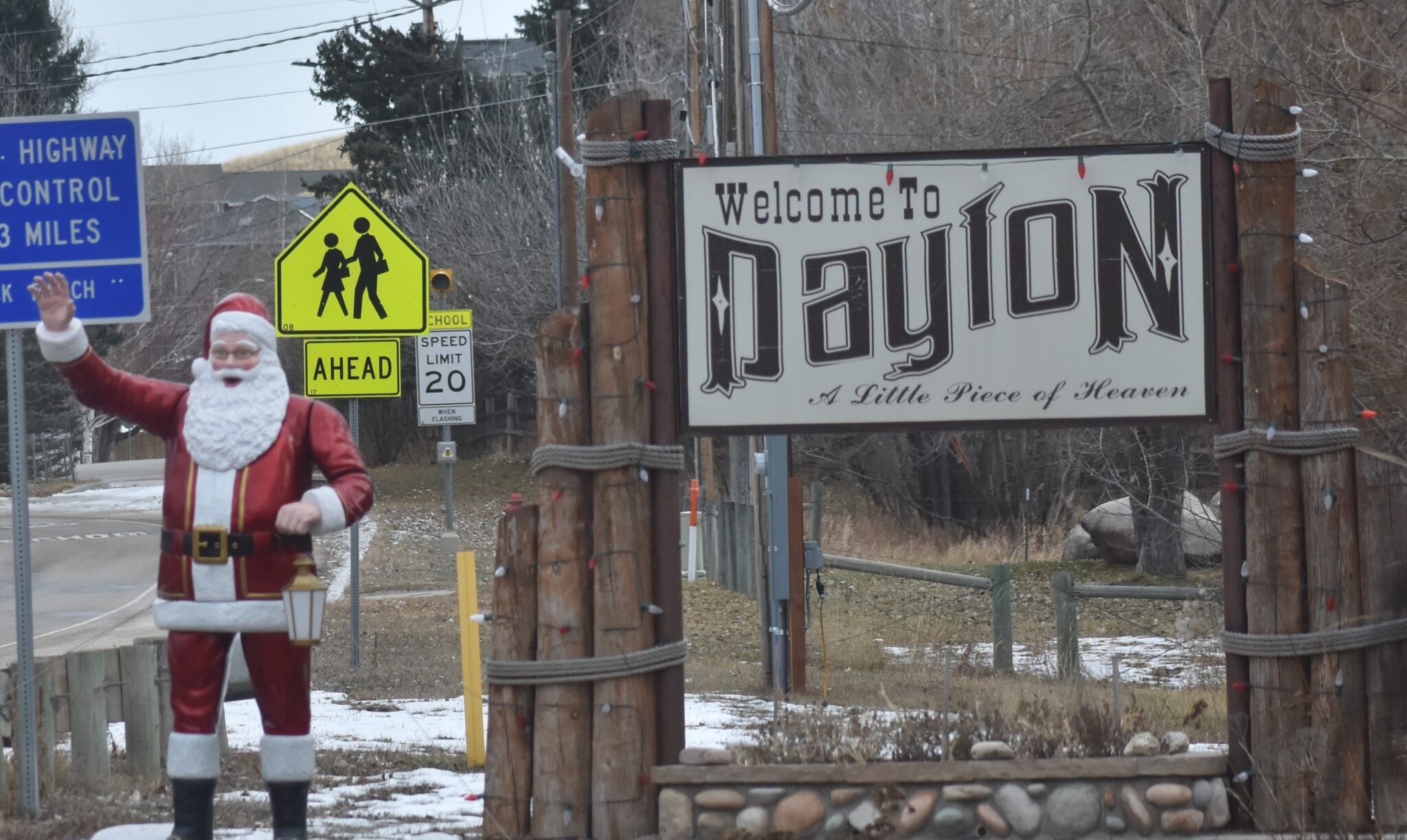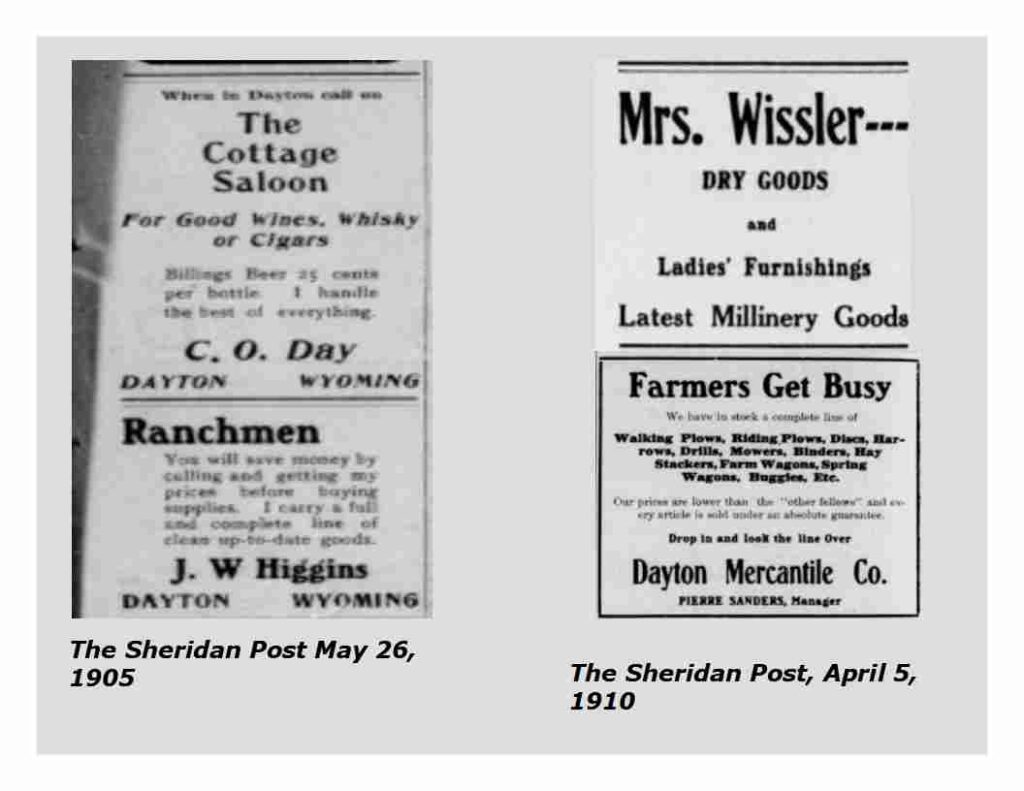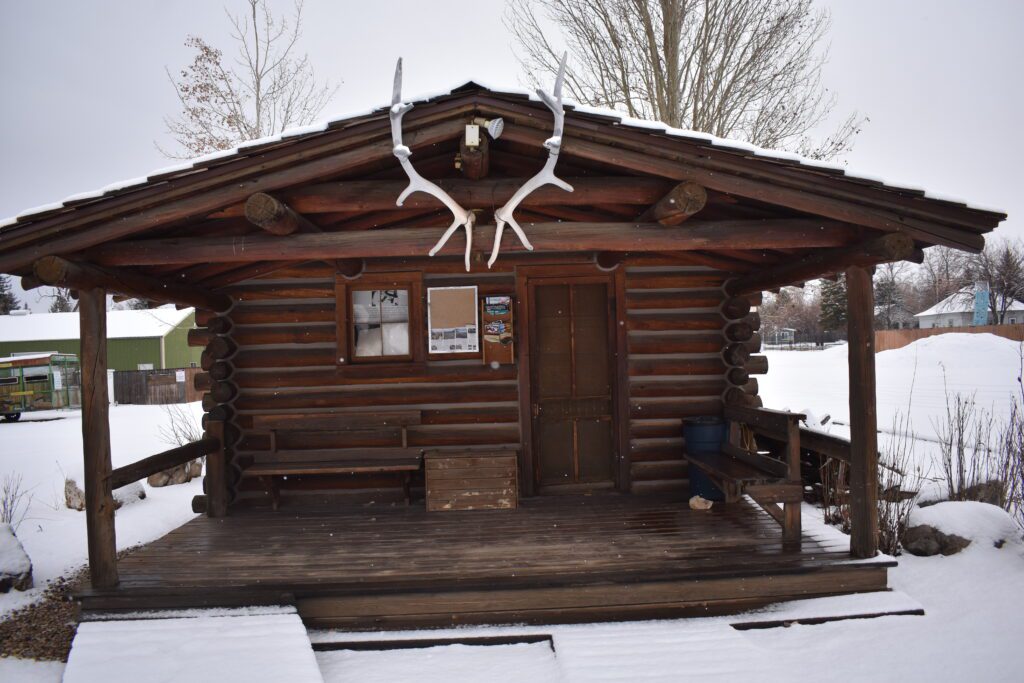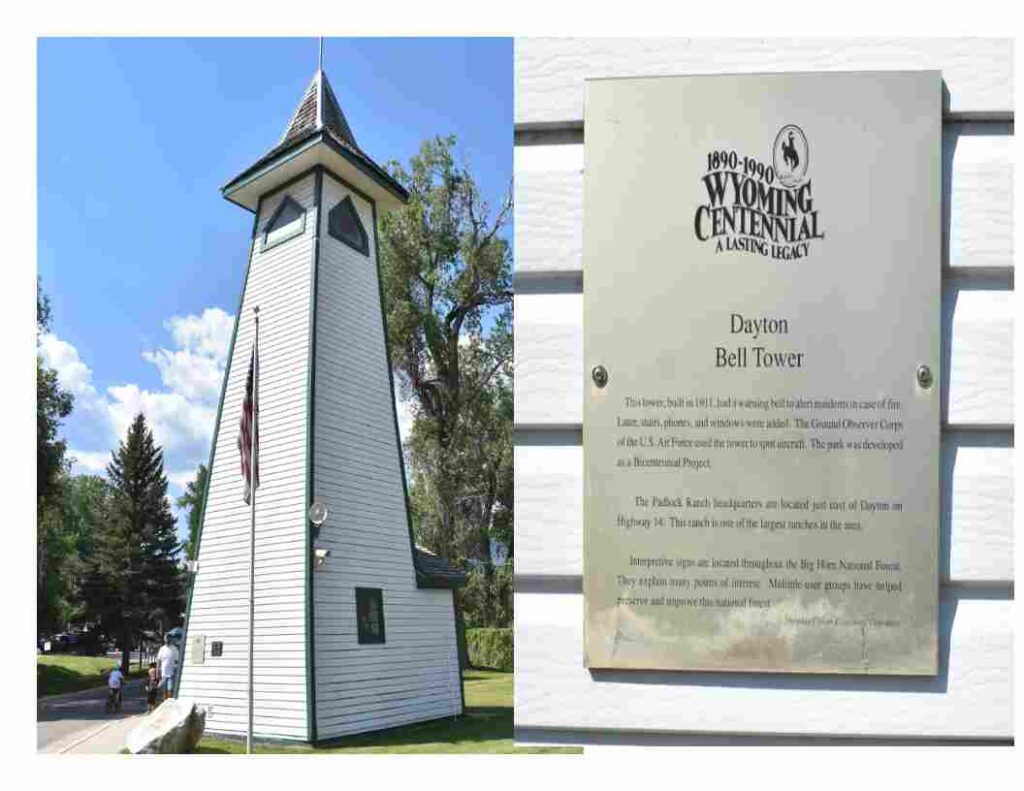News
History: The Town of Dayton

Dayton, Wyoming, incorporated in 1906, has an interesting history. It was named for Joe Dayton Thorn, one of the founding fathers of the town in 1882. Wyoming’s first rodeo was held near Dayton in the 1890s, and Dayton elected the first women mayor in Wyoming, Susan Wissler. During WWII, it also had an all-woman volunteer fire department.
Here is a little history of the town of Dayton.
The Sheridan Post, June 16, 1905 –Dayton Is Booming An Electrical Lighting Plant for the Town Politically Assured. Citizens Agree To Use 200 Lights – Dayton is a quietlittle hamlet of several hundred souls. It is situated at the junction of the two forks of Tongue River, three or four miles below the canon of the main fork. Nestling in the shadow of the Big Horn mountains, it is a delightful place to live.
Dayton has three general stores. The one owned by John Smith was purchased last week by J. H. Hill of Sheridan, who has formerly conducted stores also at Ranchester and Dayton in this county, as well as in other states. Mr. Hill has a large clean stock, and as he knows well the details of the business, ought to succeed well. J.W. Higgins carries a good line of groceries, tobacco, feed. Hour and a general line of ranchmen’s supplies. He has been in business in Dayton eleven years and enjoys a nice trade as well as the confidence of the people.
J. Dickson handles patent medicines, clothing, confectionery, etc.. and always has a crowd at his store, where he sells lots of goods. The telephone exchange is in his place of business. Among the other business interests Dayton might be mentioned restaurants, conducted by Mrs. Benes and Mary L. Ship, saloons by C.O. Day and H. Brittain, a hardware store by C. L. Olsen. Blacksmith shop by John Hunt, planing and feed mill by John Bare, millinery store by Mrs. Wissler, feed stable by Al. Gaines, barbershop by Samuel Fauver. The Dayton post office is well kept by Captain J. W. Garland.

The Mrs. Wissler referred to was Susan Wissler, who had been elected as Mayor of Dayton in 1911, and was the first women in Wyoming to be mayor of any city. Her house still stands in Dayton.

Once a cowboy said this about Wissler in The Laramie Republican, Laramie, July 29, 1912 – “You bet that little woman in the dry goods store is some scrapper.” said the gaunt cowboy who reined up in front of the Dayton saloon. “It ain’t her way to say much, but if she ever takes it into her head to clean up the town in a hurry, it’s goin’ to be a record breaking clean up. An’ if the marshal ain’t got sand enough to back her up, she’s just liable to grab his star and guns and go after the roughnecks herself.”
The Sheridan Post story continues, Doctors Kueny and Edmund a have a good practice in the profession of medicine. The latter also has ranch interests, having 320 acres of fine land near town. He has just completed a nice two-story residence in Dayton.
H. Brittain conducts an ideal road ranch at his place adjacent to Dayton. Here he keeps teams over night to hay for forty cents, and to hay and grain for seventy-five cents. Mrs. Brittian is a first-class cook, and all who stop at her place are well satisfied The road ranch is on the old Jim Morks 160-acre place, which Mr. B. bought three years ago.
One of the most hospitable homes in Dayton is that of Mr. J. S. Wilson. Mr. Wilson was until recently postmaster in Dayton. He has just concluded the work of assessing the property and taking the census of his district. Mr. W. is also water commissioner, which office he fills in an efficient and satisfactory manner. He came to this country in 1881,and is well acquainted with nearly every sec tion of northern Wyoming.
Frank Kueny. jr.. the oldest range rider in the Big Horn ggovernment timber reserve, resides in Dayton. He has been with the department nearly eight years.
The Dayton people are alive in the matter of public improvements and are ever willing to lend assistance to anything that will benefit the town and county, Just now they are looking forward to the construction and operation of an electric lighting plant within the city. Mark Shickley of Geneva, Neb., an electrician, nephew of A.C. Neeves of Little Tongue river, has already made arrangements to put in the plant, the citizens of the place having agreed to use 200 lights at a price of 50 cents each per month. The power will be furnished by lohn Bare’s feed-mill water-wheel. He now has a fifty horse-power wheel and can develop four times that much power by putting in a new wheel. The apparatus and wire have been ordered, and during July, it is contemplated, the system will be completed. Daytonites are now talking electric road to Ranchester.
They are good boosters for the sugar factory and point out that there are still other things on upper Tongue River to make an electric line a paying proposition. Besides the trade of the town and the ranch people there are inexhaustible deposits of the best building stone and limestone in the canon just above Dayton. It is also said that the prospects are good for the location of an immense brick-making plant in the canon, by Pomphrey & Hasbrouck’s new process, They take common sand and cement, wet it slightly, mix it thoroughly, run it through their patent machine under high pressure, and produce a brick that is as hard as rock and requires no burning. It is almost equal in appearance to pressed brick and can be produced, at a profit, for $8 per thousand.
At the Hill store in Dayton the postman was shown the roots of two poison parsnips, which caused the death of fourteen head of cattle belonging to W. N. Robinson, two weeks ago. A number of years ago a young boy died near town from eating these parsnips…..
Eaton Bros, have been on the Devol place in Wolf creek canon, but a little more than a year, but great has been the transformation. Much new ground has been broken up and is in crop. About 250 acres are now being irrigated. The ranch contains 1400 hundred acres. Five new rustic cottages were constructed last season, and five more, of the dimensions of 10×24,are now being built by Albert Stork. A new two story dining hall with stone basement, also a new barn, 24×40, two stories, have recently been constructed. While the postman was at the Eaton place W. Geo. Aber drove into the canon with the Sheridan high school girls’ basketball team, who spent Saturday at the Aber ranch.
At the state fish hatchery on Wolf Creek the writer found Superintendent C. W. Morgareidge busy giving the young fry their evening meal of ground liver. This year the hatchery is being run to its full capacity – two million. Last year the capacity of the building was just doubled. The state owns three acres of ground at Wolf and has the following buildings on it: Hatchery, dwelling, store-house, ice-house and barn. This is C. W. Morgareidge’s sixth year as superintendent of Division No. 2. He gets a salary of $100 per month, and his appropriation for the maintenance of the hatchery is $2,000 per year. The hatchery was established ten years ago, but nearly all the improvements have been made under Mr. Morgareidge’s incumbency.
The fish hatchery moved to Story, Wyoming in 1909, but it was first located near Dayton.

Dayton was also the home of Hans Kleiber, who was a forest ranger on the Big Horn Mountains for many years and was an artist who specialized in wildlife and scenery of the Bighorn Mountains. His studio still stands in Dayton.
The Dayton Bell Tower, used to spot planes and sound fire alarms during WWII, is now a town landmark located in Bicentennial Park.

For over 45 years, Dayton has celebrated its founding as a town with Dayton Days, held in July, with a pancake breakfast, parade, games in the Scott Bicentennial Park, and a Fireman’s Water Fight.
Dayton is the last town before tourists head up the Bighorn Mountains on the way to Yellowstone. Travelers can have a sandwich at the Mercantile, an historic building that was built in 1886. They can also fill up the car with gas and grab snacks at the convenience store, or relax in the Scott Bicentennial Park before resuming their trip to the National Parks.

